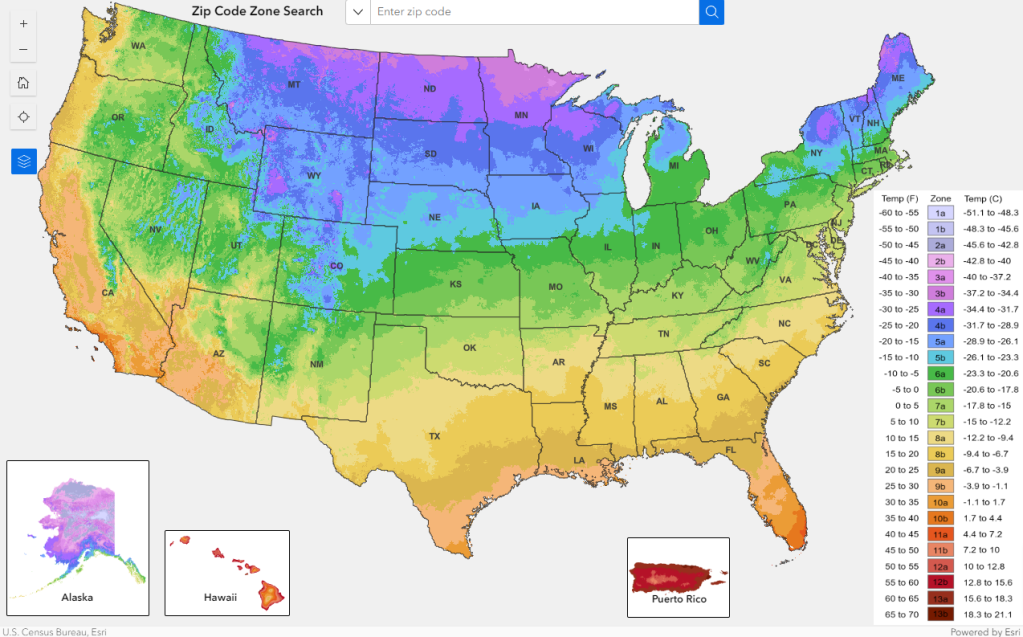
Have you ever wondered why certain plants thrive in your friend’s garden a state away but just wilt in yours? Or why your attempt at growing avocados in a chilly northern state wasn’t the smashing success you hoped for? Well, much of this can be attributed to something called USDA Hardiness Zones. This simple number can unlock the secrets to successful gardening, guiding you on what to plant, when to plant it, and how to care for it throughout the seasons. Whether you’re decking out your balcony with potted plants or cultivating a lush vegetable garden, knowing your zone is your first step toward green-thumb success.
What are USDA Hardiness Zones?
Definition and Purpose
The USDA Hardiness Zone Map divides North America into 13 zones based on their average annual minimum winter temperature (10°F increments). Each zone represents a range of temperatures that a plant can survive. The zones help gardeners and growers determine which plants are most likely to thrive at a location.
Zone Map Details
The map is numbered from 1 to 13, with each zone being 10°F warmer (or colder) in an average winter than the adjacent zone. For instance, Zone 3 is 10°F colder than Zone 4. Each zone is further subdivided into “a” and “b” to provide more precise guidance, with “a” being slightly colder than “b”. This detailed mapping allows gardeners to choose plants that are best suited to their local climate’s challenges and advantages.
How USDA Zones Affect Planting Decisions
Selecting the Right Plants
Knowing your zone helps you choose plants that will have the best chance of surviving the winter in your garden. For example, if you’re in Zone 5, you’ll want to select plants that can handle down to -20°F. This knowledge helps prevent investing in plants that are unsuitable for your climate, reducing the frustration of losing plants to winter kill.
Seasonal Planting
Zones also help determine the best planting times. Gardeners in higher zones (warmer) can usually start their spring planting earlier as the threat of frost is gone sooner than in lower zones. Conversely, in the fall, gardeners in cooler zones may need to plant winter crops earlier to ensure harvest before the first freeze. Understanding your zone helps tailor your garden’s timeline to the local climate, ensuring optimal growth and harvest periods.
Choosing Fruit Trees for Your Zone
Zone-Specific Recommendations
- Warm Zones (9-13): Opt for citrus trees like oranges and lemons, which need warmer weather. Tropical fruits like mangoes and avocados will also thrive.
- Temperate Zones (5-8): Apple and pear trees are perfect as they can handle a bit of cold. Stone fruits and pomes, such as plums and apples, are also ideal.
- Cooler Zones (1-4): Consider hardy options like tart cherries, crabapples and certain pears that can withstand freezing temperatures.
Microclimate Considerations
Even within your yard, microclimates affect how plants grow. Account for areas in your garden that might be warmer or cooler than the general zone suggests. Southern exposures, walls that retain heat, and sheltered spots can sometimes host plants that generally prefer a warmer zone.
Choosing Vegetables for Your Zone
Adaptable Vegetables vs. Zone-Specific
Some vegetables, like lettuce, radishes, carrots and kale are quite forgiving and grow in almost any zone, while others, like okra, demand warmer soil. Other warmth-loving vegetables like tomatoes and peppers might need additional heat sources like cloches or grow tunnels in cooler zones.
Extending the Growing Season
Techniques like using row covers, cold frames, and greenhouses can help extend the growing seasons in zones with shorter growing periods, allowing you to grow a broader range of vegetables.
Impact of Climate Change on USDA Zones
Shifting Zones
As global temperatures gradually increase, many zones are shifting. This can be challenging for perennial plants that are sensitive to these changes and might affect long-term gardening strategies. Recent data suggests that many zones are shifting northward due to global warming, which means gardeners may need to adapt their plant choices and strategies in the coming years.
Adapting to Changes
Stay informed about the latest zone updates and consider adaptable or resilient plant varieties that can cope with fluctuating conditions. Observational gardening—keeping notes on what’s thriving, what’s struggling, and the yearly weather patterns—can also be incredibly valuable. Being observant and flexible allows you to adjust to these changes. Perhaps you’ll find that plants previously unsuited to your area are starting to thrive.
Practical Tips for Using USDA Zone Information
How to Find Your Zone
Finding your USDA Plant Hardiness Zone is quite simple. You can use the USDA’s interactive map to quickly determine your zone. Here’s how you can do it:
- Visit the USDA Plant Hardiness Zone Map website.
- Enter your zip code in the ‘Quick Zip Code Search’ box, or click on your location on the map.
- The map will display your zone, which reflects the average annual extreme minimum winter temperature for your area.
This tool is especially useful if you’re in an area where the zones are not clear-cut and may overlap.
Integrating Zone Knowledge into Garden Planning
Begin with your zone information to select the right plants for your garden. Factor in your local microclimates and adjust plant choices and care strategies accordingly. This tailored approach helps mitigate risks and increases the likelihood of a flourishing garden.
Embracing your USDA Hardiness Zone isn’t just about following rules—it’s about understanding your garden’s unique climate personality and making it work for you. Whether you’re a seasoned gardener or a newbie with your first set of tools, a little zone knowledge goes a long way in setting you up for success.